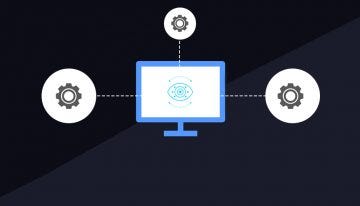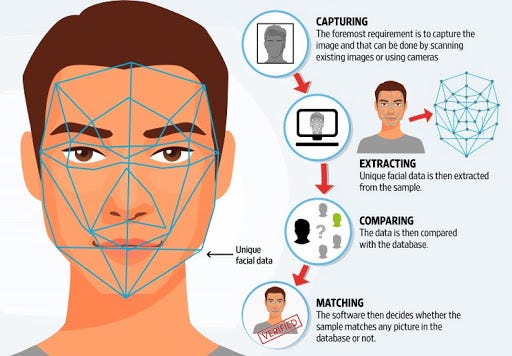Overview
- Computer vision is the technology that allows the digital world to interact with the real world.
- Explore 5 of the hottest applications of Computer Vision
Introduction
I started using Facebook 10 years ago. Likewise, if you used that long ago you must remember the manual tagging of photographs. But now we do not have to tag these pictures manually. Facebook recognizes most of the people in the uploaded picture and provides suggestions to tag them. Similarly, you must have seen those hilarious filters on Snapchat where people use the dog filter and get a dog face on. Have you ever wondered how is all of it possible? How is our phone able to detect our face and add the filters over it? These are some of the computer vision applications.

Computer vision is one of the hottest research fields in the data science world. Moreover, it has become a part of our personal lives. Knowingly or unknowingly, we all use various features which have computer vision techniques running at the backend. For instance, we use the face unlock in our smartphones. The image below is efficiently explaining how does face detection works.

I choose face detection for starting this article since this is the one application of computer vision, we all have seen. But trust me computer vision is not limited to this. In this article, you will explore more interesting applications of computer vision.
If you are looking to master in computer vision, check out our course Computer Vision using Deep Learning 2.0
Table of Contents
- What is Computer Vision?
- Pose Estimation using Computer Vision
- Image transformation using Gans
- Computer Vision for developing Social distancing tools
- Converting 2D images into 3D models
- Medical Image analysis
What is Computer Vision?
Before entering into the world of computer vision applications, first, let’s understand what computer vision is? In short, Computer vision is a multidisciplinary branch of artificial intelligence trying to replicate the powerful capabilities of human vision.
If we go through the formal definition,
“Computer vision is a utility that makes useful decisions about real physical objects and scenes based on sensed images” (Sockman & Shapiro, 2001)
Computer vision works through visual recognition techniques like Image classification, object detection, Image segmentation, object tracking, optical character recognition, image captioning, etc. I know these are a lot of technical terms but understanding them is not tough. Just see the image below and you will understand many of these terminologies.

Let’s start with the first image. If I ask you what is there in the picture? Your answer will be, its a cat. This is classification. That means labelling the image based on what it consists of is classification. Here the class is ‘Cat’.
Now you know the class of the image. The next question comes where the object is situated in the image. When we identify the location of the object in the frame and create a bounding box around it, It is known as localization. In the second image, we have identified the location of the object and labeled it as a cat.
The next term is the object detection. In the previous two cases, we have a single object in the image but what if there are multiple objects present. Here we identify the instances present and their location via bounding boxes.
In object detection, we use a bounding box that is either square or rectangular in shape but it does not tell anything about the shape of the objects. Instance segmentation creates a pixel-wise mask around each object. Hence instance segmentation gives a deeper understanding of the image.
Check the following resources if you want to know more about Computer Vision-
- Computer Vision using Deep Learning 2.0 Course
- Certified Program: Computer Vision for Beginners
- Getting Started With Neural Networks (Free)
- Convolutional Neural Networks (CNN) from Scratch (Free)
Recent developments in deep learning approaches and advancements in technology have tremendously increased the capabilities of visual recognition systems. As a result, computer vision has been rapidly adopted by companies. Successful use-cases of computer vision can be seen across the industrial sectors leading to widening the applications and increased demand for computer vision tools.
Now without losing more time, let’s jump into the 5 exciting applications of computer vision.
Human Pose Estimation
Human Pose Estimation is an interesting application of Computer Vision. You must have heard about Posenet, which is an open-source model for Human pose estimation. In brief, pose estimation is a computer vision technique to infer the pose of a person or object present in the image/video.
Before discussing the working of pose estimation let us first understand ‘Human Pose Skeleton’. It is the set of coordinates to define the pose of a person. A pair of coordinates is known as the limb. Further, pose estimation is performed by identifying, locating, and tracking the key points of Humans pose skeleton in an Image or video.
#pose-estimation #computer-vision #gans #applications-of-ai #deep-learning #deep learning
